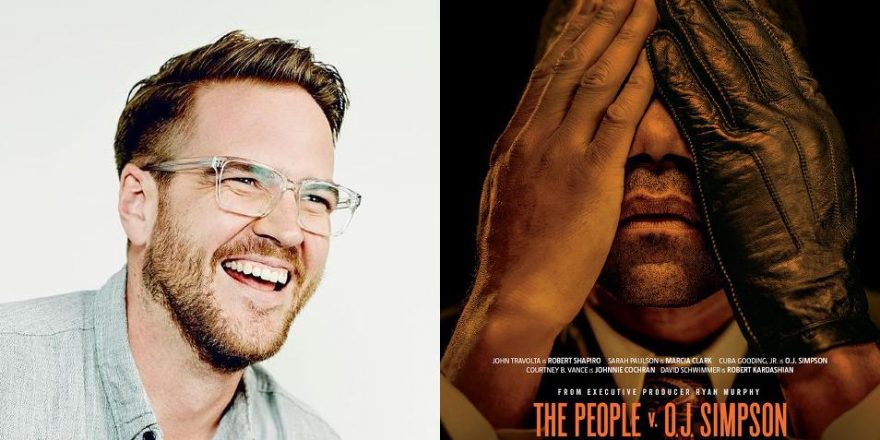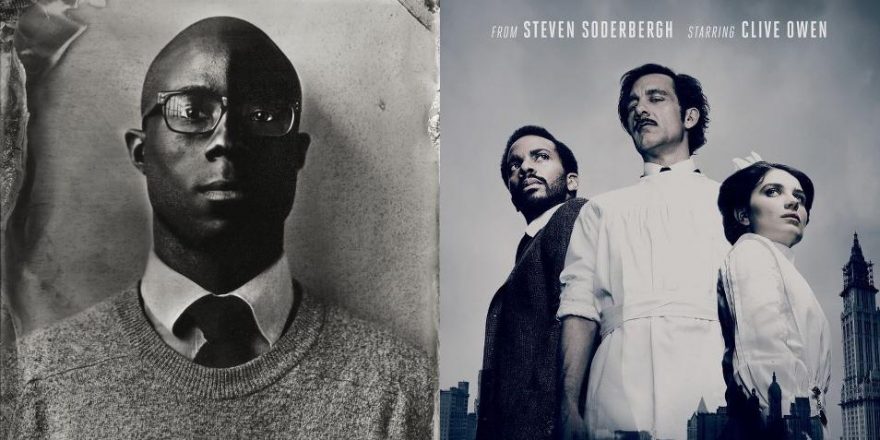Sprung from a genre in which exploitation and melodrama are the cornerstones, there is no reason American Crime Story: The People v. O.J. Simpson should be as good as it is. What gave its makers the audacity to actually create something this knowing and special out of such scandalous material?
A decadent gumbo of tabloid excess and cultural commentary, American Crime Story: The People v. O.J. Simpson delivers delights on multiple levels. The consistently balanced irony in the writing. The dizzying brash-pop of its visual style. The gliding, constant camera movement. It actually makes my body tingle a little bit to watch. So much visual momentum is given to a story involving characters sitting in chairs and walking down hallways. This approach brings an intensity to every step of legal minutiae playing out in O.J.’s trial, a tall order made even taller by the fact that the majority of people watching this story (hopefully) know its outcome.
Making art about the near past is always tricky. One almost inevitably becomes a historical revisionist in the attempt to construct drama out of what “really happened.” The bread and butter of the “true crime” story is exploiting this curiosity. But rather than shying away from the tired and trite tropes of the genre, The People v. O.J. Simpson does the opposite. It leans into the heightened, almost cartoonish performances. The high-stakes dramatics. The dark, pounding score. The voyeuristic elements tricking the mind that we are watching exactly what went down. Amidst delivering the goods on a purely aesthetic level, the show is able to maintain a balance by presenting us with vividly drawn characters as opposed to caricatures of the players involved. Its makers avoid cliché and let the events depicted exist in a moral gray area. Through this lens, you are able understand each character’s individual motivations on a deeper level.
The People v. O.J. Simpson is very much the product of strong collaboration, with its foundation being the scripts written by Scott Alexander and Larry Karaszewski (as well as Maya Forbes, Wallace Wolodarsky, D.V. Devincentis and Joe Robert Cole) and the directorial efforts of Ryan Murphy, Anthony Hemingway and (for a single episode) John Singleton. The distinct authorial touches of these collaborators are found throughout, with the most consistent (joint) voice being that of Alexander and Karaszewski, masters of the biopic who previously penned The People vs. Larry Flynt, Man on the Moon, Big Eyes and (my personal favorite) Ed Wood. Though Alexander and Karaszewski’s feature work has primarily been in collaboration with auteur directors, the tone of each of their films mentioned above was set with a sharp script. They are writers who have the savvy to know that you can wink at an audience, letting them in on the joke, but you don’t have to do it at the expense of your characters.
In opting for its visually indulgent approach, paired with incisive writing, the show takes on the feel of a modern opera.In opting for its visually indulgent approach, paired with incisive writing, the show takes on the feel of a modern opera. Ryan Murphy’s sure-handed direction of the pilot episode is especially dazzling. And the man knows how to revel in a fantastic music cue. Nina Simone’s cover of “I Shall Be Released” underscoring O.J.’s white Bronco chase at the close of the episode brings what was already a riveting sequence of television into the sublime. The same could be said for the second episode’s use of “Sabotage,” re-contextualizing the Beastie Boys’ overly played-out hit to dizzying effect.
Perhaps most impressive is the ability of The People v. O.J. Simpson to set and maintain a tonal playfulness throughout its 10-episode arc. The audience is given permission to feel like they’re ahead of the show at various times. We are allowed to both laugh and recoil in horror at the bumbling hubris of the prosecution and every insidious trick of the defense team. It’s the equivalent of screaming “Don’t go in there!” during a horror film. We see the peril coming a mile away, and it’s still riveting. The absurdity of these real-life events is never questioned. And the joy of process is also brought forth in the storytelling. The joy of watching professionals do their jobs. The joy of problem-solving. It’s obvious that Alexander and Karaszewski share a deep understanding and appreciation of these tropes.
Solid performances abound. Sarah Paulson and Sterling K. Brown both give weight and nuance to the complicated relationship of Marcia Clark and Christopher Darden. John Travolta is almost kabuki-esque as Robert Shapiro. He adopts a cadence and body posture in his performance that feels lost in time. There are many potential pitfalls in adopting an acting style this heightened and reverent to the written word. If you go too big and broad, you will seem ridiculous and unbelievable, or it’ll simply feel like an impression. It’s a tightrope walk between finding the humanity and nuance of the character and firing on all cylinders in the performance.
None of the actors embrace this duality like Courtney B. Vance. His portrayal of Johnnie Cochran is ripe with humor and grace. He is able to humanize a man whose complex motivations made him an easy target for ridicule in the public eye. We are invited to laugh at Cochran’s eccentricities while being confronted dead-on with his moral agenda; the LAPD was historically racist and corrupt and the exposure of this was indeed a righteous cause. The tragedy is that in the furthering of his cause, the murder of two innocent people became eclipsed by the media storm. Vance is able to balance the polarizing aspects of Johnnie Cochran with dignity and humanity, never more so than during a moment in the third episode in which an emotional wall comes tumbling down. After much speculation as to whether Cochran is going to join O.J.’s defense team, his firm receives a phone call (supposedly) from O.J. Simpson. Cochran stands and takes a moment to compose himself before picking up the call. He takes a deep breath and stretches his arms, calming his body down. It’s small moments of truth and vulnerability like this peppered throughout The People v. O.J. Simpson that elevate the show into greatness.
The subject of race in the trial is also confronted head-on over the course of the series. Not just with its bold inclusion of the racially insensitive language of Mark Fuhrman (and how it was used as a tool by the defense) but also in the interpersonal relationships of the characters. The complexities of this subject live primarily in Sterling K. Brown’s portrayal of Christopher Darden. His role in this is one of the greatest tragedies to come out of this story. Brought on to the case because the prosecution felt pressure to hire a face that would speak the language of a “downtown jury,” he is then hung out to dry at every turn by his supposed teammates. Left to dig his own grave with poor judgments during the trial (most famously asking O.J. to try on a certain ill-fitting glove), Darden is finally given a cathartic moment of rage toward the end of the series that we’ve been wishing for him the entire time.
The primary goal of any show like this should be to entertain, rather than stick to the facts. It’s a given that there is going to be some kind embellishment along the way. The People v. O.J. Simpson is able to take this into account and (for the most part) present the undisputed facts of the case while making you feel something for the each of players involved. With this, the show’s makers have taken a stale genre and raised the bar for future projects based on true events. Why not attempt to create a sense of true humanity in a made-for-television true crime show? In presenting characters as real people, the stakes are raised, the moral gray area is highlighted, and at the end of the show you don’t feel like you just ate a pile of junk food. And most important of all, by taking this risk, the show’s makers have given us something new.







